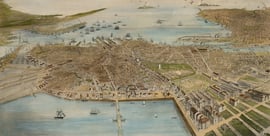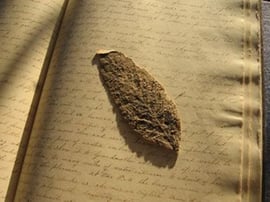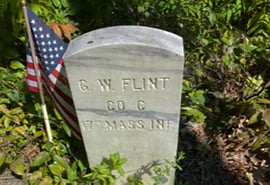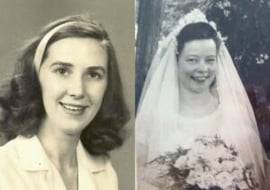If you are ever in Essex County, Massachusetts, there is an interesting cemetery within the Maudslay State Park in Newburyport. It is a pet cemetery and features seven gravestones of beloved pets that once belonged to the wealthy Moseley family.
Continue readingEvery now and then my research takes me into the murky corners of history, inter-personal drama, and catastrophic tragedy, making it suddenly feel like I’m watching a binge-worthy Netflix series instead of doing my job. That’s when I reach for my phone or turn to my..
Continue reading →Frank Caleb Stowell’s American craftsman home in Medford, Massachusetts, circa 1911-1920
Continue reading →1863 print depicting American artist Washington Allston
I have lived in Allston, a neighborhood in Boston, Massachusetts, for about three years. For most of that time, I never gave the area’s name much thought. I assumed that it was either the name of a town back in..
Continue reading →Illustration of a home in Freetown, Massachusetts, circa 1895
Continue reading →Map of Boston in 1870. Via Wikimedia Commons.
Over the last couple of years I’ve been researching the lives and descendants of Irish immigrant Bostonians Edward J. Costello (1866-1926 [?]) and Mary Josephine Maloney (c. 1872-1943). This genealogical journey has taken..
Continue reading →I spent over a decade volunteering at the Custom House Maritime Museum in Newburyport, Massachusetts. During that time I’ve helped with many projects, but one of the most exciting began when I uncovered a ship log with an unusual provenance. Unlike the vast majority of..
Continue reading →When George Washington Flint was buried in 1873, I doubt anyone suspected that in little over a century, his final resting spot would one day be the parking lot of a Dunkin’ Donuts.
Continue reading →For many years, my family’s brick wall stood firm at the unknown parentage of Betsey Doty, who married Ebenezer Besse in Plymouth on 26 September..
Continue reading →I wrote about Margaret (Mulligan) Kelleher and her infant son John Cornelius Kelleher a few months ago in a previous Vita Brevis post. While I thought the trail had..
Continue reading →








